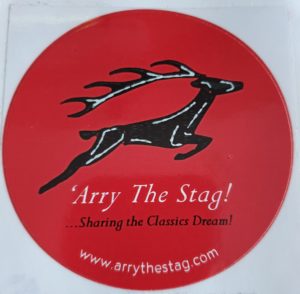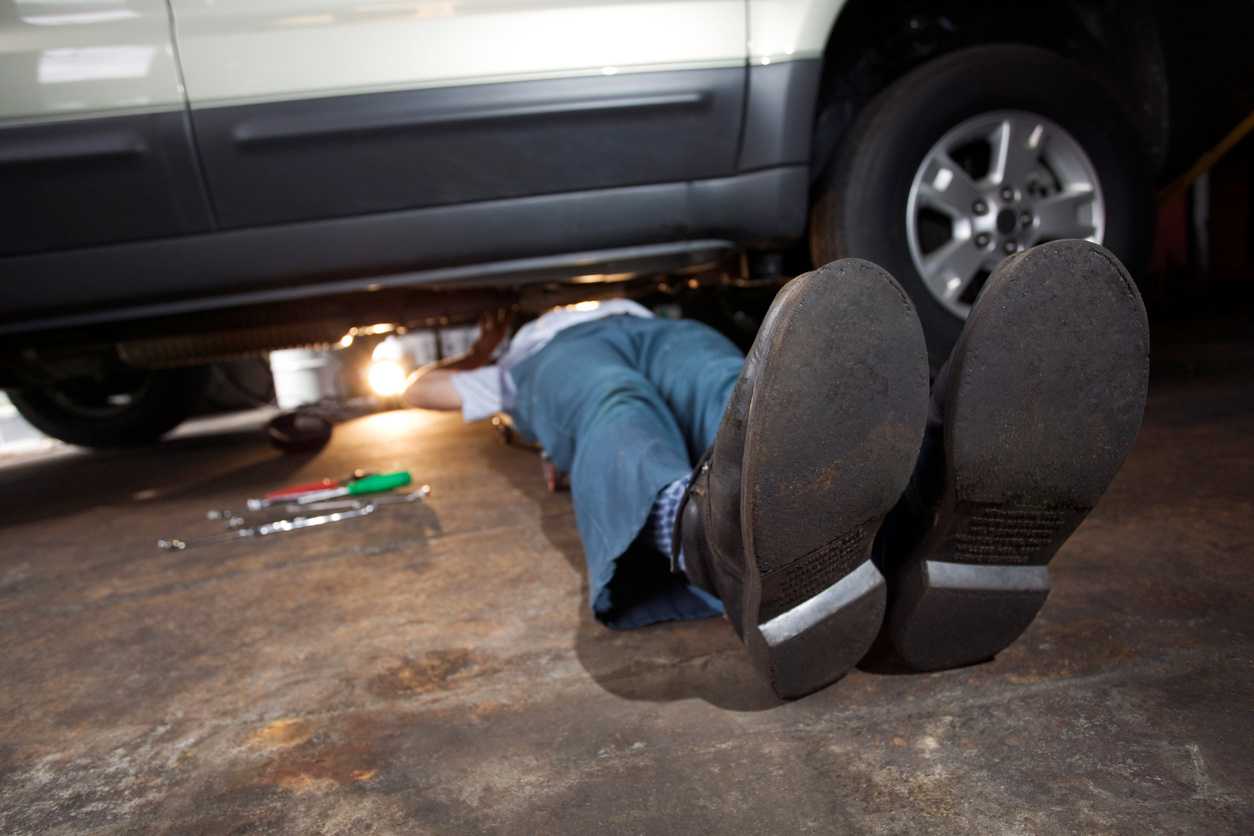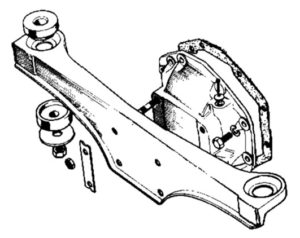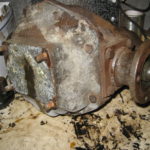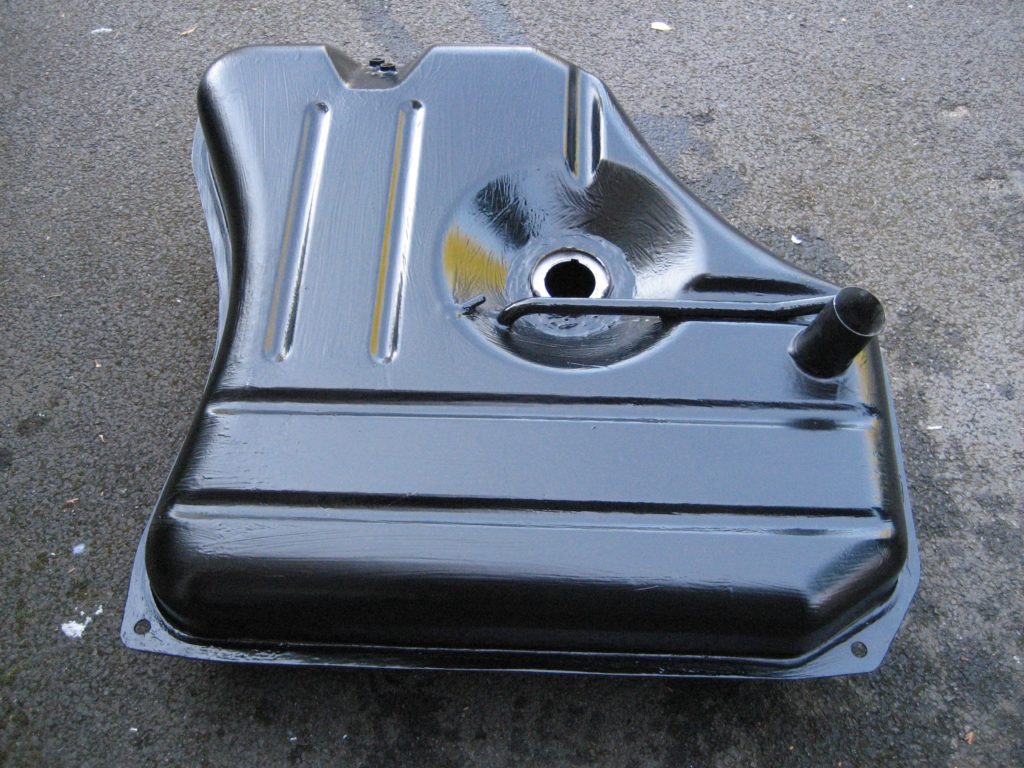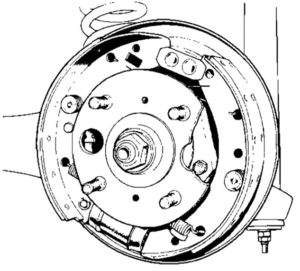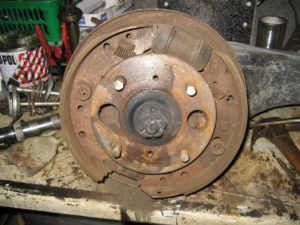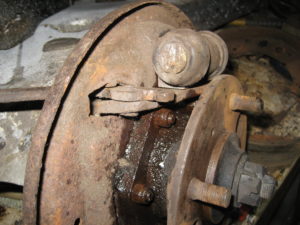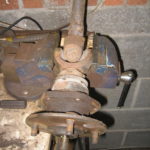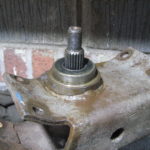With the front suspension now refurbished, it’s time to start the rear. The obvious first task being to remove the hand brake cable and the prop shaft which both gave no problem at all – at least after I had stuffed a rag into the rear of the auto box – the fluid just kept on coming out…..
There are only really 4 bolts holding the rear suspension and drive train to the chassis of a Stag. The 2 connecting the anti-vibration straps to the rear floor and the 2 connecting the differential to its mounting plate. The whole rear suspension, diff and brakes all then drop from the car. Simple but very heavy so make sure you have a jack under the hypoid casing of the diff before you start!!.
Once detatched from the car, the rear suspension components, drive shafts and brakes can be dismantled and refurbished seperately. You will read about these later.
 The first items I tackled were the rear subframe arms. Whilst these are fairly heftly lumps of steel, you can see that mine have suffered from major rust ingress to the point where holes can be seen on the base and sides close to the rear subframe bush. How this ever got through it’s last MOT. I’m amazed. These holes had been covered by a thick coating of underseal but are clearly dangerous as a quarter of the weight and cornering forces of the vehicle pass through this point.
The first items I tackled were the rear subframe arms. Whilst these are fairly heftly lumps of steel, you can see that mine have suffered from major rust ingress to the point where holes can be seen on the base and sides close to the rear subframe bush. How this ever got through it’s last MOT. I’m amazed. These holes had been covered by a thick coating of underseal but are clearly dangerous as a quarter of the weight and cornering forces of the vehicle pass through this point.
I managed to find a couple of rear subframe arms at the Triumph show at Stoneligh earlier this year. They where in a scrap bin and covered in rust and muck – but solid. I paid £30 for the pair. Rimmer price for used is £60 each or £140 for new. After a good going-over with a wire brush and several coats of epoxy paint, both came up looking great and with no signs of rust ingress. A bit of elbow grease and paint but a saving of over £250 !!
I also reburbished and painted the brackets, cleaned and replaced the shims, and bought some more nylocs and a new rear sub-frame bush. Looks better than new now. Ready to go back on.
